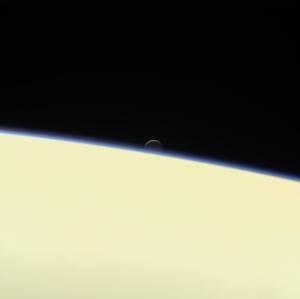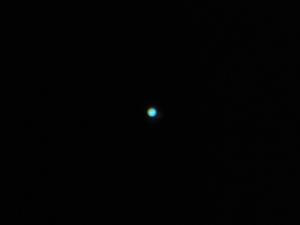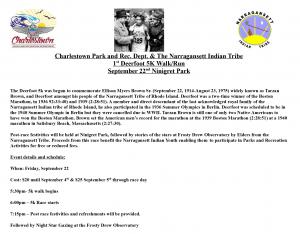
Stargazing Nights
- Where:
- Frosty Drew Observatory
- When:
- Friday September 15, 2017 at 7:30 p.m
- Cost:
- $1 Suggested Donation per Person
Tonight is Stargazing Night at Frosty Drew Observatory and the forecasts are quite variable at this time, though have been improving as the day progresses. We can generally expect mostly clear skies with a chance of fog for the first half of the night, with clouds and fog increasing quickly after midnight. Though forecasts are quite variable and we could see much heavier cloud cover during our session if forecasts trend the other way. Regardless, we should be able to grab a view of Saturn’s rings in the telescope and more if skies play nice. Add in that the 15% waning crescent Moon will not rise until 2:25 a.m. and dark skies will rock.
We will open the Observatory and Sky Theatre at 7:30 p.m. In the Observatory, telescopes will start with a twilight view of Saturn’s rings and moons. If skies fare on the clear side, we will spot Neptune and dozens of deep sky objects, including star clusters and nebulae. In the Sky Theatre we will feature our popular showcase of celestial objects photographed at Frosty Drew Observatory. We will stay open until 11:30 p.m. or until the sky crashes our fun. Whichever comes first.
Overall, tonight could turn out great. We were pretty much expecting a cloudy night, though the forecast has really opened up. The Milky Way has moved quite a bit to the west with most of the galactic center out of view. Though if skies stay clear, we could catch fantastic views of the Milky Way’s galactic arms overhead, with the Andromeda Galaxy becoming quite visible later in the night. There is a lot of variability in the forecast regarding the level of cloud cover and what fog will do, though it could be worth it to make the drive. Following Frosty Drew Observatory on Twitter (@FrostyDrewOBSY) or Facebook will get you updates on what is happening at the Observatory so you can make an informed decision before venturing out. So stop in tonight, catch a view of the cosmos, and chat about the fabulous NASA Cassini mission which plunged into Saturn’s atmosphere this morning.
------------------
Weekly Happenings
Scott MacNeill
Earth this morning, September 15, 2017 at 7:55 a.m. ET, the NASA Deep Space Network antenna complex lost contact with the NASA Cassini spacecraft. As planned, the spacecraft entered Saturn’s atmosphere this morning in a fabulous end-of-exploration operation. The Cassini mission, which as been studying Saturn up-close for the past 13 years, has spent all of its fuel and posed a contamination threat to Saturn’s moon, Enceladus, which has a subsurface ocean and signs of hydrothermal activity. As a result, the mission team decided to plunge Cassini into Saturn’s atmosphere while sending back critical information about what is happening in Saturn’s atmosphere for as long as the spacecraft could stay aligned with Earth. In the coming weeks, mission scientists will analyze the data returned by Cassini in its final moments, shedding new insights on the gas giant. The Cassini mission is a hugely popular planetary mission. The progress of the mission changed our understanding of Saturn and the Solar System, including the discovery of oceans on Titan and Enceladus which challenged our understanding of where life beyond Earth may potentially thrive. Take a moment this weekend to catch up on the fabulous NASA Cassini Mission and tip your hat to the mission team for operating a massively successful mission that has affected the lives of so many on Earth.
On Friday, September 22, 2017 at 4:02 p.m. ET, the Autumnal Equinox will occur. This officially marks the end of the summer season and the start of autumn in the Northern Hemisphere. On this day the Earth will neither be tilted toward or away from the Sun and all locations on Earth will experience an equal period of day and night. After the Equinox, our daytime hours will become less than our nighttime hours, with the difference becoming greater with each passing day. Welcome autumn!
On Tuesday, September 5th, Earth reached the point in its yearly orbit where Neptune is on the opposite side of the Earth than the Sun. This is called opposition and places Neptune into our evening sky after sunset. Stop in over the next couple months and catch a view of Neptune from nearly 2.7 billion miles distant and see if you can spot its greenish-blue color.
Save the Date: The Deerfoot 5K Walk/Run in Ninigret Park
On Friday, September 22, 2017, Charlestown and the Narragansett Indian Tribe commemorate Ellison Meyer Brown Sr. (known as Deerfoot among the Narragansett Tribe), who was a two-time winner of the Boston Marathon and participant in the 1936 Summer Olympics. The event starts at 5:30 p.m. with the walk and race. At 7:15 p.m. post-face festivities begin, followed by stories of the stars at Frosty Drew Observatory by tribe elder Thawn Harris. Proceeds from the race benefit the Narragansett Indian Youth. Read about the Deerfoot 5K and if looking to participate in the race, sign up.
-Scott



